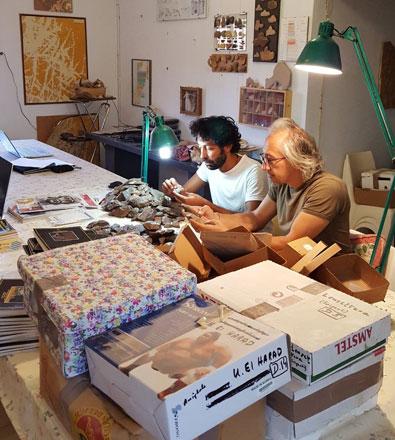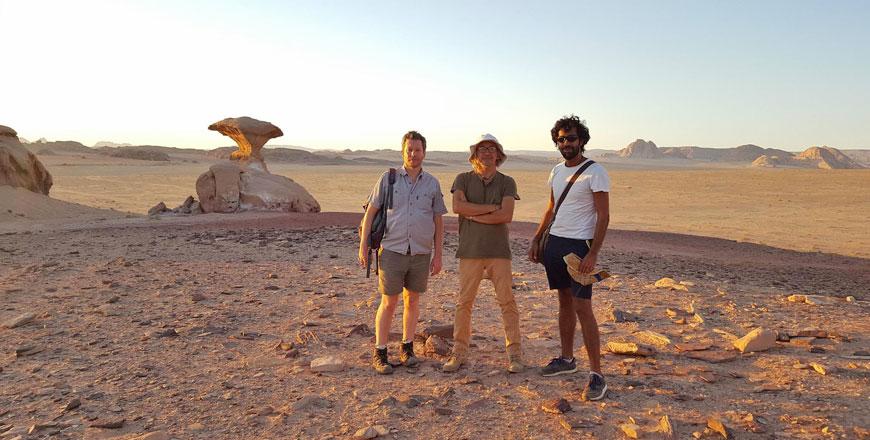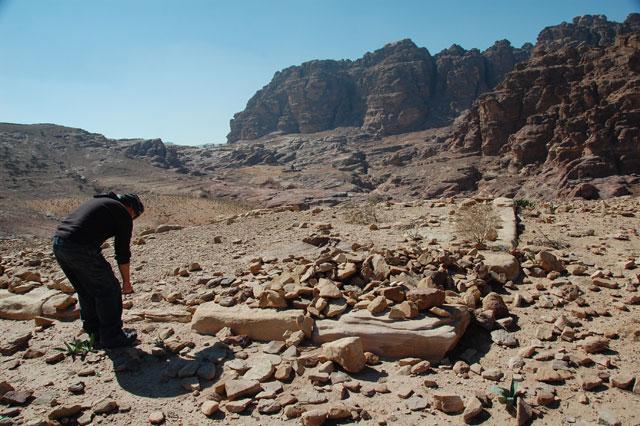You are here
‘Findings in Wadi Rum desert to be showcased at new museum to be built in Qaa Disah’
By Ana V. Ibáñez Prieto - Sep 01,2018 - Last updated at Sep 01,2018

Thousands of findings uncovered over the past 40 years by an international scientific team in the Hisma Basin will be showcased at a new museum to be built in Qaa Disah (Photo courtesy of Italian embassy)
AMMAN — Thousands of findings uncovered over the past 40 years through the Italian archaeological mission to the Hisma Basin will be showcased at a new museum to be built in Qaa Disah in the south, the Italian embassy to Jordan announced last Sunday.
The new museum in Qaa Disah (Wadi Rum desert), 316km south of Amman, comes after the success of the latest scientific international mission led by Italian archaeologist and paleo-ethnologist Luca Pollarolo (APA-University of Genève - Gaes-Archaeology at WITS University-South Africa), which was carried out with the support of the Aqaba Special Economic Zone Authority (ASEZA) and the Italian embassy in the frame of the “Italia, Culture, Mediterraneo” programme.
The exploration of the Hisma Basin dates back to the 1970s, when a team from the laboratory Studi per l’Ecologia del Quaternario at the University of Florence initiated a mission aimed at studying the origins of the bedouins and the changes in their culture through time, the embassy said.
“During the following years, the focus was shifted to all the prehistoric evidence found in the site, which included lithic artifacts just found on the surface, paintings and engravings, and even the classification of animals and plants” Pollarolo told The Jordan Times, recalling how the research revealed “an abundance of rock art in both paintings and engravings, and hundreds of potential Stone Age sites from Neolithic, Chalcolithic and other settlements with outstanding scientific and cultural value”.
“Today, new generation of researchers have revealed the risks that this art and sites are facing both from natural sources and human agency,” the expert pointed out, adding that “in fact, to better protect the unique heritage of the Kingdom, it is necessary to further study and record rock art and Stone Age sites”.
“Such site and its peculiar features were certainly a key for the construction of a new multidisciplinary museum,” Pollarolo said, noting that the idea of creating a new museum started more than 20 years ago, when Professor Edoardo Borzatti realised the importance of combining all evidence together in one location accessible to all while leading the Italian mission at the time.
However, he added, the procedures taken towards the establishment of the new museum continued intermittently over the years until its construction was fully abandoned for more than 10 years.
“Fortunately, the great interest of the ASEZA and the Italian embassy allowed for a new season of research this year aimed at the restoration of the building structure and the evaluation and selection of the material to be exhibited,” Polarollo said.
In this regard, a scientific international mission was conducted in order to evaluate the thousands of pieces collected by the mission over the past 40 years, and to select the best examples to be showcased in the future museum.
Asked about the mission’s next steps, Pollarolo noted that the team will return in 2019 to finish the examination and selection of the most representative pieces to enter the museum, in addition to launching a new research season in the area based on long term activity with the creation of a database (GIS platform).
“The creation of a database is a first step for further research in the area,” the archaeologist explained, noting that “the partnership with different institutions in Europe will create a substrate for an enormous number of further collaborations, drawing more attention to the project across Europe and the Levantine area through an exchange of information in the database with neighbouring countries”.
Related Articles
AMMAN — In order to protect the rich cultural heritage of the Hishma Desert (Wadi Rum), two measures involving the local community are keys
AMMAN — Italian Ambassador to Jordan Fabio Cassese, Acting Director General of the Department of Antiquities Ahmad Juma’a Alshami, and Deput
AMMAN — The recent discovery of a hidden monument in Petra could help solve some of the mysteries of the Nabataean city, experts said on Mon


















